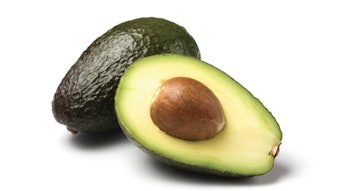Marathon runners can be proud of their stamina, but all that time outdoors boosts their risk of skin cancer, including the potentially deadly malignant melanoma, according to a study in the Archives of Dermatology.
"We are the first to report this," researcher Christina M. Ambros-Rudolph, MD, tells WebMD in an e-mail interview.
Ambros-Rudolph is a consultant dermatologist at the Medical University of Graz, Austria.
She and her co-researchers, all runners, conducted the study after caring for eight ultra-marathon runners with malignant melanoma over the past decade.
Comparing Runners and Nonrunners
In the study, the researchers evaluated 210 marathon runners, men and women, aged 19 to 71.
They compared the runners' skin cancer risks with those of 210 men and women matched for age and gender who were not long-distance runners.
All participants underwent a skin cancer exam and answered questions about personal and family skin cancer history, as well as changes in skin lesions, sunburn history, sun sensitivity, and physical characteristics such as skin and eye color.
Even though more of the nonrunners had higher sun sensitivity, reflected by their light eyes and sensitive skin types, the runners had more atypical moles and more lesions called solar lentigines—often called "liver spots"—which are associated with a higher risk of malignant melanoma.
Not surprisingly, the more intense the training regimen, the more likely a marathon runner was to have the lesions and moles, Ambros-Rudolph found. While some runners logged about 25 miles a week, others put in more than 44 miles a week.
No lesions suggestive of malignant melanoma were found, but 24 marathoners and 14 from the control group were referred to dermatologists to evaluate growths that looked like nonmelanoma skin cancers (such as basal cell and squamous cell skin cancers).
What's behind the increased risk?
The study reflects what dermatologists see in practice, says Diane Madfes, MD, a New York City dermatologist and a spokeswoman for the Skin Cancer Foundation.
Among her patients who are long-distance runners, Madfes says she has seen many cases of abnormal moles as well as nonmelanoma cancers, though not much melanoma, she says.
Greater ultraviolet exposure, of course, is one explanation for the increased risk, say the Austrian researchers.
Nearly 97% of the runners studied said they wore running shorts and short-sleeved or sleeveless shirts.
Only 56% said they regularly use sunscreen; nearly 2% never do.
Also, long-term, high-intensity exercise suppresses the immune system, the Austrian researchers write. They note that patients who have undergone transplants and had immunosuppressive therapy have an increase in all types of skin cancers.
Reducing the Risk
Ambros-Rudolph advises runners to cover up, train when sunlight exposure is less intense, and slather on the sunscreen—in spray or lotion form. An SPF of 15 or higher is recommended.
The type of product preferred varies by gender, Ambros-Rudolph has observed. "Men usually hate using lotions, and sprays are quicker to apply and easier to apply on hairy skin, while women often suffer from dry skin and love lotions that moisturize at the same time."
Reapplying a water-resistant sunscreen every two hours is important, adds Madfes.
She suggests runners consider bicycling attire, especially the long-sleeved shirts made of newer wicking materials that draw away moisture from sweat.
About 62,000 new cases of malignant melanoma are expected this year in the U.S., along with more than a million nonmelanoma skin cancers, says the American Cancer Society.
About 8,000 are expected to die this year from malignant melanoma; nonmelanoma skin cancers will claim about 2,000 lives.
By Kathleen Doheny, WebMD Medical News, November 20, 2006










